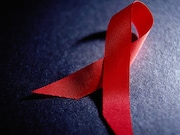Agency says effective HIV prevention, treatment not reaching those who could most benefit
WEDNESDAY, Feb. 27, 2019 (HealthDay News) — The battle against new HIV infections has lost some steam in recent years, according to the U.S. Centers for Disease Control and Prevention.
After about five years of significant declines, the number of new HIV infections began to level off in 2013, at about 39,000 infections per year. The reason for the slowing, according to the CDC, is that effective HIV prevention and treatments are not reaching those who could most benefit. These shortfalls in prevention and treatment are most glaring in rural areas and in the South, and they disproportionately affect blacks and Hispanics.
The CDC noted that HIV infections declined in some groups but increased in others. From 2010 to 2016, annual HIV infections were stable among gay and bisexual men, who continue to account for the largest portion (about 70 percent) of new infections. But infection trends varied by race, ethnicity, and age. Infections remained stable among all black gay and bisexual men, increased 30 percent among all Hispanic gay and bisexual men, and fell 16 percent among all white gay and bisexual men. Furthermore, infections decreased more than 30 percent among black gay and bisexual males aged 13 to 24 years and remained stable among Hispanic gay and bisexual males aged 13 to 24 years. Meanwhile, they rose 65 percent among black and Hispanic gay and bisexual men aged 25 to 34 years. Infections fell 17 percent among heterosexual men and women combined, including a 15 percent decrease among heterosexual black women. Infections decreased 30 percent among people who inject drugs, but appear to have stabilized in more recent years.
“After a decades-long struggle, the path to eliminate America’s HIV epidemic is clear,” Eugene McCray, M.D., director of the CDC Division of HIV/AIDS Prevention, said in a statement. “Expanding efforts across the country will close gaps, overcome threats, and turn around troublesome trends.”
Copyright © 2019 HealthDay. All rights reserved.








